Sharks are truly mesmerizing marine creatures that both intrigue and scare people.
After all, these cold-blooded fish range in size from just a few inches all the way up to 50 feet long.
Many shark species are completely harmless to humans, although there are larger kinds of sharks that may mistake people for prey and cause serious injury or death in rare cases.
Whether you admire sharks or are wary of them, you may be curious about how these animals live beneath the ocean’s surface.
Sharks spend the majority of their time swimming, as great white sharks can swim up to 50 miles or 80.4km a day.
Most sharks need to stay swimming to breathe and keep oxygen flowing through their gills.
Keep reading to learn more about sharks, why they swim so much, and their amazing lives underwater.
Table of Contents
Why do sharks swim so far?
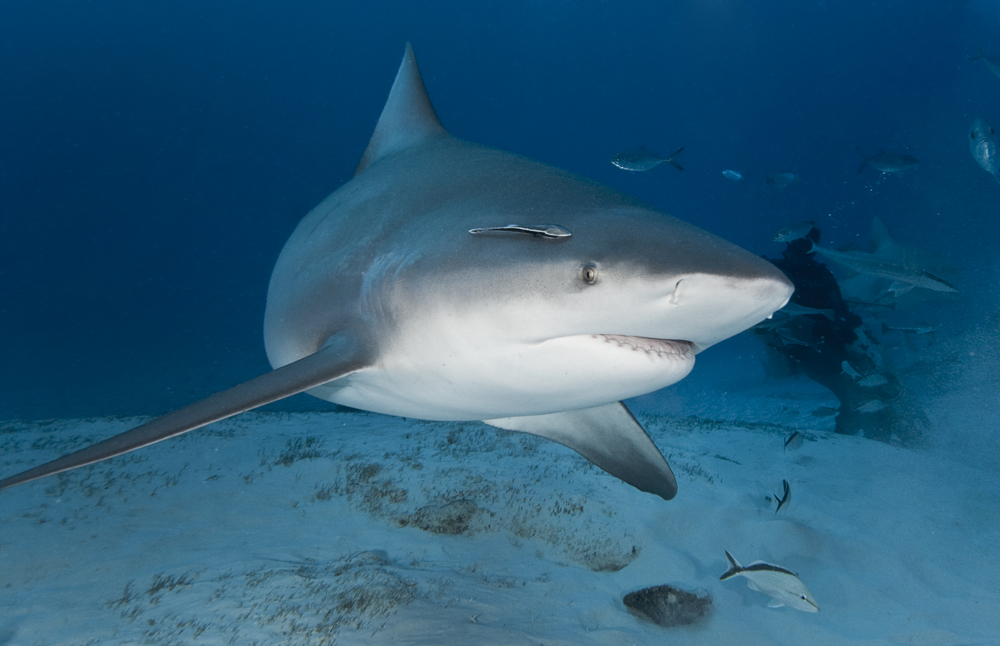
If it surprises you that bigger sharks can swim up to 50 miles in a day, keep in mind that’s because sharks have to keep moving to survive.
Depending on the species, they may swim in open water or closer to the shore, but either way, they need to swim around to keep breathing.
As sharks swim for the majority of the day, they can cover quite long distances. Also, sharks don’t sleep in the same way humans do.
Instead, they alternate between active and restful states, and when they need to rest, their brains are less active even though their bodies keep moving.
One other reason why sharks swim so far is that they need to find food. If they aren’t having any luck in one location, they will swim to another spot in search of smaller fish, crustaceans, and shrimp.
Why are sharks always swimming?
Many sharks need to spend most of their time swimming to maintain oxygen flow and stay alive.
This includes iconic species like great whites, hammerheads, and whale sharks, all of which would suffocate if they stopped swimming for too long.
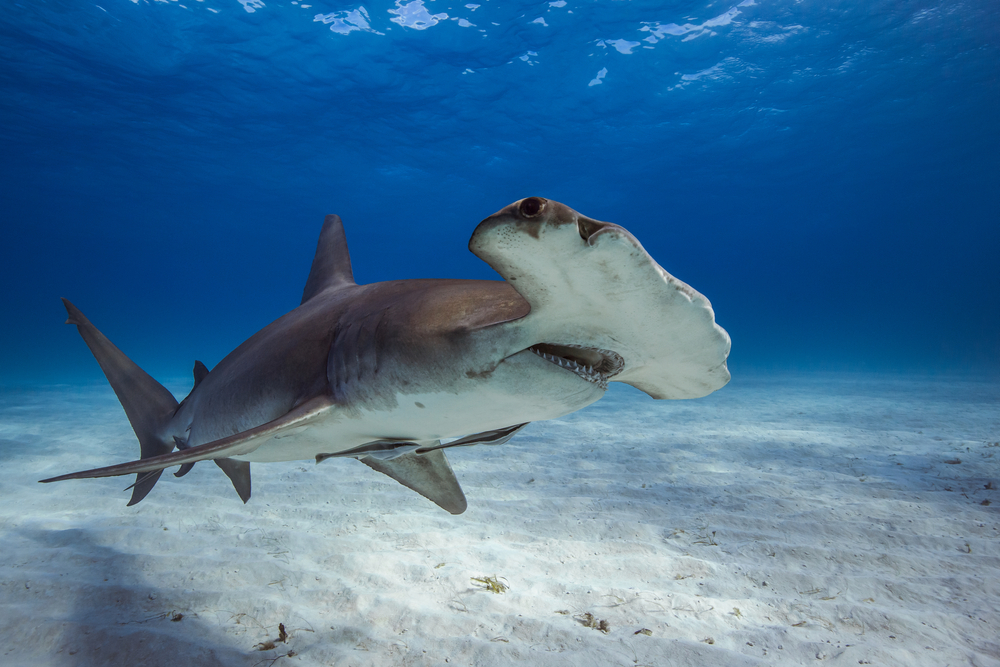
These shark species rely on the strong current to push oxygen through their gills and keep their blood pumping.
Also, the more they swim, the more likely sharks are to find food and escape threats.
Because sharks don’t need to physically stop and sleep like land mammals, they can slowly but surely keep moving along in the ocean, covering many miles each day.
That’s why shark trackers are always busy monitoring the movements of many kinds of sharks.
What sharks swim the farthest?
There are around 500 shark species on earth, but the largest ones swim the farthest. Great white sharks move faster than whale sharks and may sometimes swim up to 50 miles a day.
Great whites can reach up to 20 feet long and 2,400 pounds, which gives them extreme power to cover significant distances from coast to coast.
These sharks prefer water temperatures between 50- and 75-degrees Fahrenheit, and the warmer they are, the faster they can swim.
Reaching speeds of up to 15 mph in short bursts, great whites generate impressive momentum to move forward.
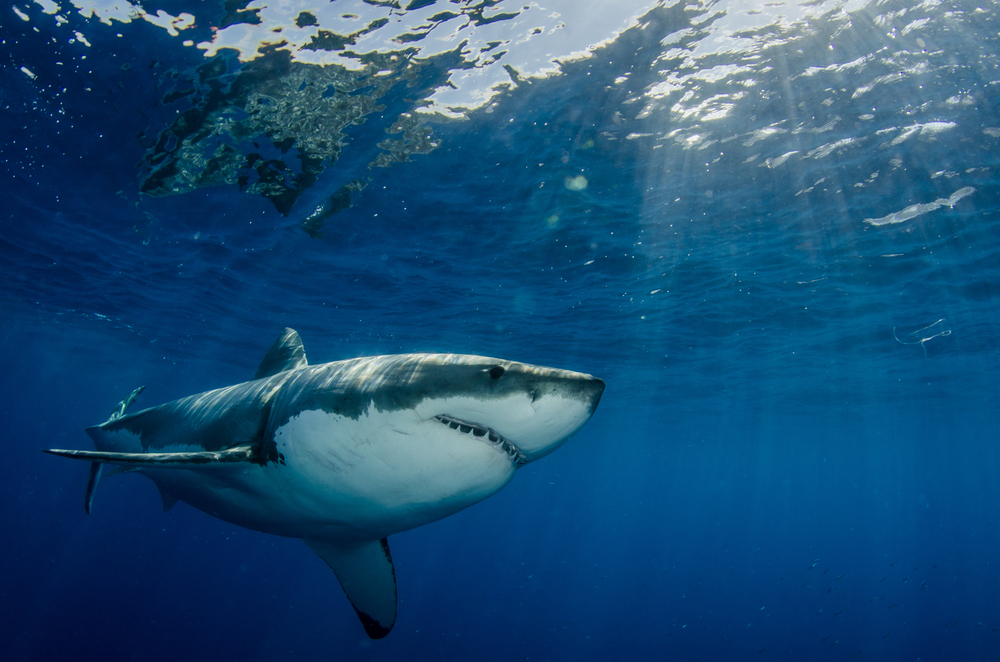
Their tails move from side to side for an extra push, maintaining smooth and efficient movements to continue swimming.
Where do sharks swim?
Sharks are found all over the world, with an estimated one billion sharks in the earth’s oceans, although the true number could be much higher.
Sharks may swim hundreds of feet below the surface in the middle of the ocean or closer to the beach, depending on which kind they are and if they are feeding or not.
Using their tails to propel them through the water, many great whites gravitate toward nearshore areas if the water is warm and the food is diverse.
This may raise concerns for swimmers who are afraid of sharks coming too close to shore, but in reality, shark attacks are very rare.
Even with sharks swimming up to 50 miles a day to get closer to shore in search of food, the chances of being attacked by a shark in the U.S. are only 1 in 11.5 million.
The likelihood of getting killed by a shark is much rarer, around 1 in 264.1 million.
Why do sharks migrate?
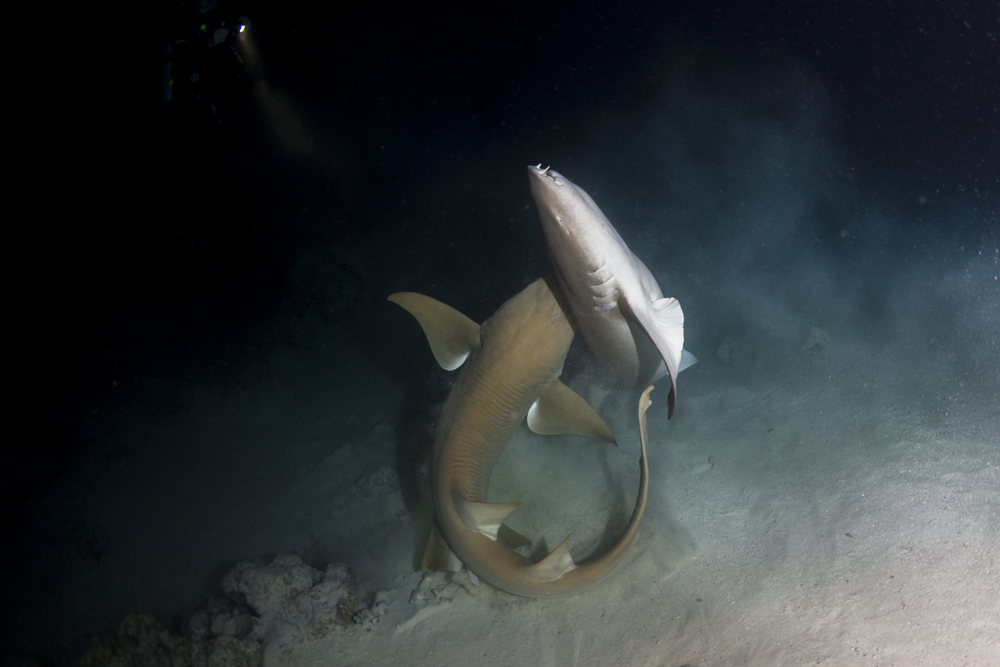
Sharks swim many miles a day and migrate throughout different marine ecosystems to find food.
In addition to feeding, sharks also migrate for mating and birthing. They may move due to seasonal temperature changes to find warmer waters where it’s easier to find food, too.
Zoologists are very interested in these shark migration patterns, and advanced satellite tagging allows scientists to track shark movements.
Data shows that sharks often reappear in the same waters at certain parts of the year, supporting the idea of seasonal migration as sharks seek warm water and abundant fish stocks.
There are many examples of sharks moving to more tropical waters to feed and find a mate. Take blacktip sharks, which migrate by the thousands to the warm waters off the coast of Florida to mate every winter.
Great whites are another example, often appearing off the California coast near the Farallon Islands and Año Nuevo, particularly in the spring when elephant seal pups are easy prey.
How many kinds of sharks are there?
The distance a shark swims per day varies by species, and there are around 500 different kinds of sharks officially recognized by zoologists.
While there are obvious physical differences, rays are sharks’ closest relatives, found in similar marine environments across the globe.
There are nine orders of existing sharks and four that have gone extinct. The following sharks are grouped together and share similar physical and behavioral characteristics:
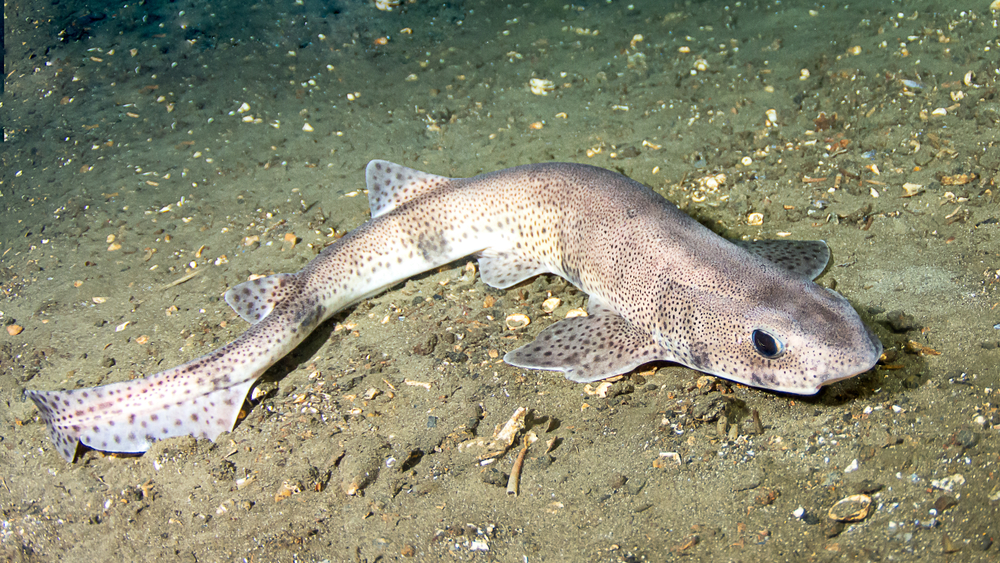
- Ground sharks – blacktip, Caribbean, grey reef, blue, bull, tiger, whitetip, catsharks, and hammerhead sharks
- Mackerel sharks – megamouth, goblin, basking, shortfin, longfin mako, and great white sharks
- Cow and frilled sharks, which look somewhat like a marine snake
- Angel sharks, which look most like skates and stingrays
- Carpet sharks – zebra, nurse, and whale sharks
- Prickly and bramble sharks
- Dogfish and rough sharks
- Bullhead/horn sharks
- Sawsharks
What is the smallest shark?
The smallest shark is a dwarf lantern shark, a type of dogfish shark that measures under 8 inches, so it’s smaller than a human hand.
Dwarf lantern sharks are only found in waters off the coast of Colombia and Venezuela at depths of 928 to 1,440 feet.
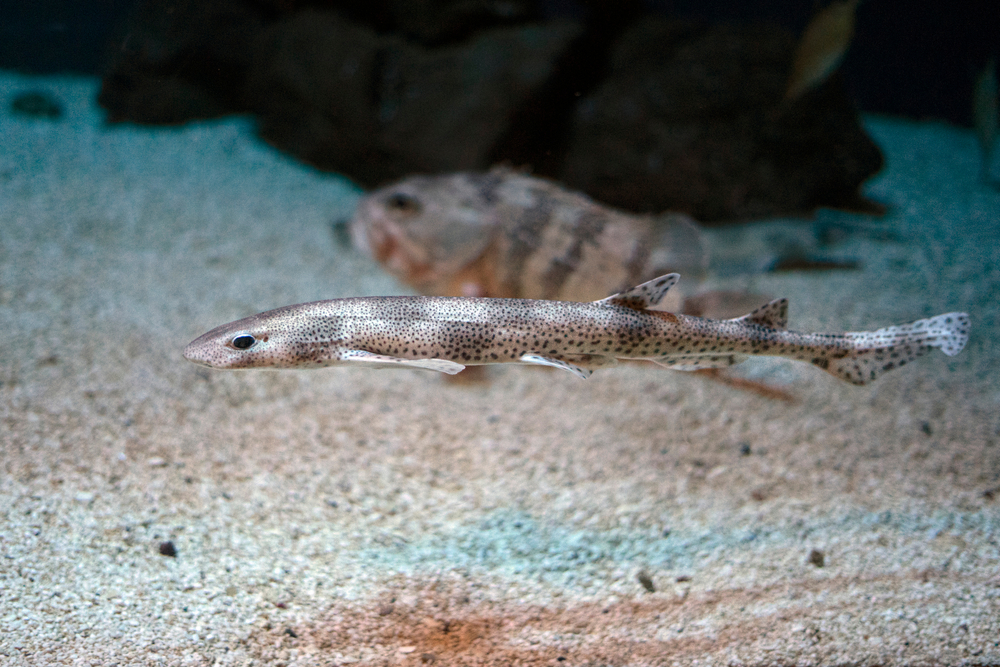
Little is known about dwarf lantern sharks because they have only been spotted by zoologists a few times, although they aren’t thought to swim very far compared to larger species.
Dwarf lantern sharks have photophores, which are light-emitting organs near the fins and belly.
They provide camouflage for feeding in shallow water, as the belly blends in with sunlight hitting the water.
When dwarf lantern sharks return to their preferred deeper water, the light draws in smaller creatures for the sharks to feed on.
What is the biggest shark?
The largest shark in the world is the whale shark, with some reaching 60 feet long and weighing up to 41,000 pounds.
This endangered species swims throughout tropical waters across the globe, covering around 40 miles a day.
The furthest whale shark migration on record spanned 12,000 miles throughout the Pacific Ocean.
In 2018, a whale shark called Anne by scientists was tracked migrating from Panama to the Philippines.
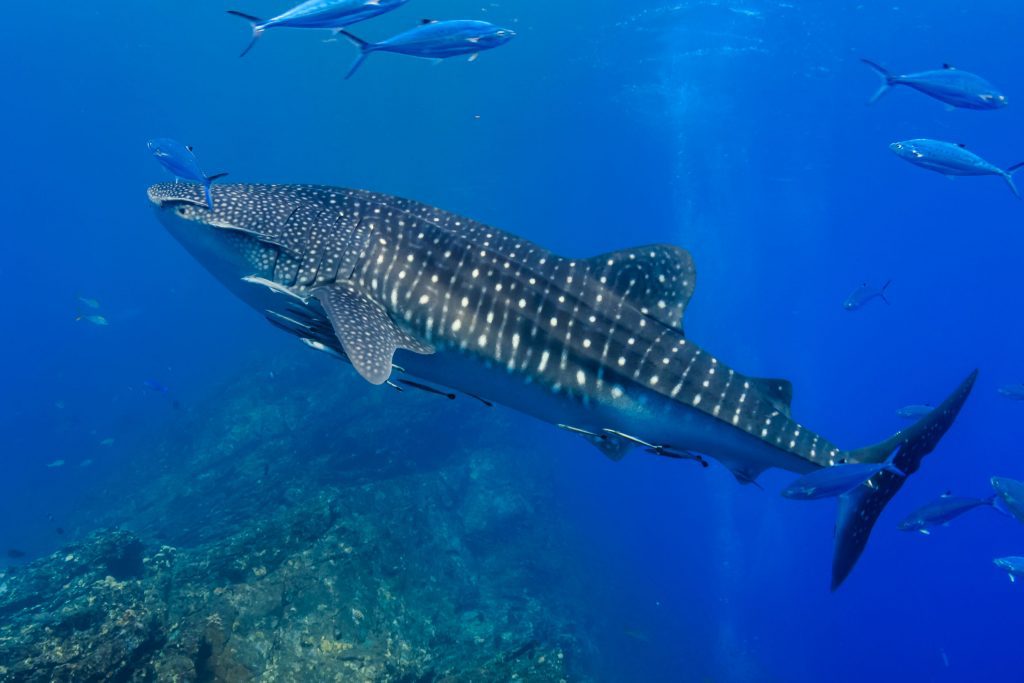
Although whale sharks are bigger than great whites, they are totally harmless to people. That’s because whale sharks are plankton filter feeders, opening their huge mouths to consume up to 45 pounds of plankton daily.

















